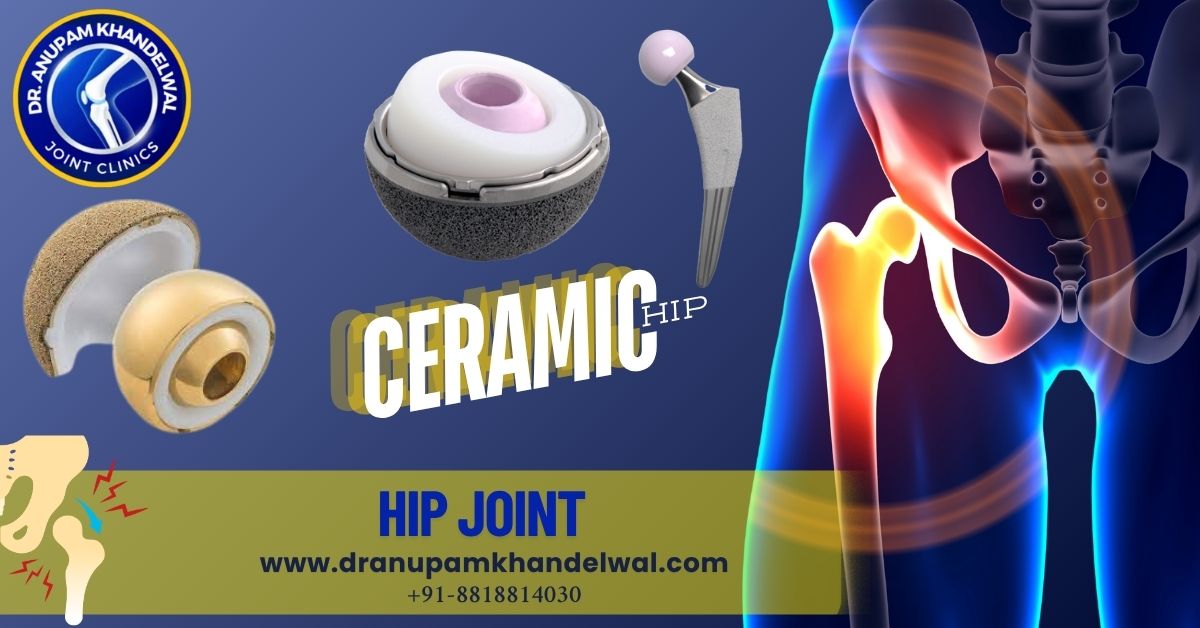Understanding the Hip Joint – A Guide by Dr. Anupam Khandelwal
The hip joint is one of the largest and strongest joints in the human body. It plays a critical role in our ability to walk, sit, stand, and perform daily activities. Yet, when it becomes damaged due to injury, arthritis, or wear and tear, it can severely impact your quality of life.
I ( Dr. Anupam Khandelwal) have treated numerous patients with hip problems ranging from minor pain to severe arthritis requiring hip replacement. This page is designed to help you understand the hip joint in simple terms and guide you on what to do if you’re experiencing hip pain.
What Is the Hip Joint?
The hip joint is a ball-and-socket joint. The “ball” is the top of your thigh bone (femur), and it fits into the “socket” in your pelvis called the acetabulum. This joint allows for a wide range of motion in multiple directions, making it one of the most mobile joints in the body.
To ensure smooth movement, the bones in the hip joint are covered with articular cartilage, a smooth and slippery tissue that prevents friction. The joint is surrounded by muscles, tendons, and ligaments that support movement and provide stability.
Topics of Interest related to HIP JOINT diseases & Treatment
- HIP REPLACEMENT SURGERY
- Ceramic Hip Replacement Surgery
- Dual Mobility Hip replacement Surgery
- Hip Joint Rejuvenation & Repair
- HIP AVN
- Fractures around HIP joint
- Hip Impingement Syndrome
Common Causes of Hip Pain
Hip pain can result from a variety of causes, and not all of them require surgery. Some of the most common causes include:
1. Osteoarthritis
Osteoarthritis is the most frequent cause of chronic hip pain in adults, especially above the age of 50. It is a degenerative condition where the cartilage wears away over time, leading to pain, stiffness, and reduced mobility [1].
2. Rheumatoid Arthritis
This is an autoimmune condition that causes inflammation of the joint lining and leads to cartilage damage.
3. Hip Fractures
A fall or accident can cause a break in the upper part of the thigh bone. Hip fractures are particularly common in elderly individuals with weak bones (osteoporosis).
4. Avascular Necrosis
This occurs when the blood supply to the femoral head is reduced, leading to bone death. It can result from trauma, steroid use, or alcohol abuse [2].
5. Bursitis or Tendinitis
Inflammation of the soft tissues around the hip can cause localized pain and tenderness.
6. Developmental Dysplasia
In some people, the hip joint does not form properly in childhood, leading to problems later in life.
Symptoms That Should Not Be Ignored
If you experience any of the following symptoms, it’s advisable to consult an orthopedic specialist:
- Persistent hip or groin pain
- Difficulty in walking or standing for long periods
- Stiffness, especially in the morning
- Clicking or grinding sound during movement
- Limited range of motion
- Limping or imbalance
Diagnosis of Hip Joint Problems
At my clinic in Indore, we follow a detailed process to accurately diagnose hip issues:
- Physical Examination – To assess your pain, movement, and strength.
- X-rays – To evaluate bone alignment and detect arthritis or fractures.
- MRI or CT Scans – For detailed imaging of soft tissues and early-stage avascular necrosis.
- Blood Tests – In case infection or autoimmune disorders are suspected.
Treatment Options
The treatment for hip joint problems depends on the cause, severity, and the patient’s age and activity level.
1. Conservative Treatment
In many cases, surgery is not immediately needed. We begin with:
- Medications – Pain relievers and anti-inflammatory drugs
- Physiotherapy – To strengthen muscles and improve flexibility
- Lifestyle Modifications – Weight management, posture correction, and activity changes
- Injections – Corticosteroid injections can offer temporary relief
2. Surgical Treatment
When conservative measures fail, surgical options are considered:
A. Hip Arthroscopy
A minimally invasive procedure to treat early joint problems like labral tears or cartilage damage.
B. Hip Replacement (Total Hip Arthroplasty)
This is recommended for severe arthritis or avascular necrosis. In this procedure, the damaged ball and socket are replaced with artificial components made of metal, ceramic, or plastic. Hip replacements have shown excellent results in restoring mobility and relieving pain [3].
C. Nail / Plate fixation of Hip Fractures
When Should You Consider Hip Replacement?
You may be a candidate for hip replacement if:
- Pain interferes with daily activities like walking or climbing stairs
- Conservative treatments no longer provide relief
- Your sleep is disturbed due to hip discomfort
- X-rays show significant joint damage
Life After Hip Replacement
Most patients report dramatic improvement after surgery. With proper rehabilitation, you can expect to return to a pain-free and active lifestyle. Some precautions and physiotherapy will be necessary in the early recovery period, but the long-term results are highly rewarding.
As per global data, over 90% of hip replacements last more than 15–20 years with proper care [4].
Why Choose Dr. Anupam Khandelwal for Hip Treatment in Indore?
- Extensive experience in joint replacement surgeries
- Personalized treatment plans
- Dedicated team for pre- and post-operative care
- Use of advanced surgical techniques for faster recovery
Book a Consultation
If you’re experiencing hip pain or stiffness, don’t delay. Early diagnosis can prevent further damage and improve outcomes. Contact us through www.dranupamkhandelwal.com or visit our clinic in Indore to schedule your appointment.

